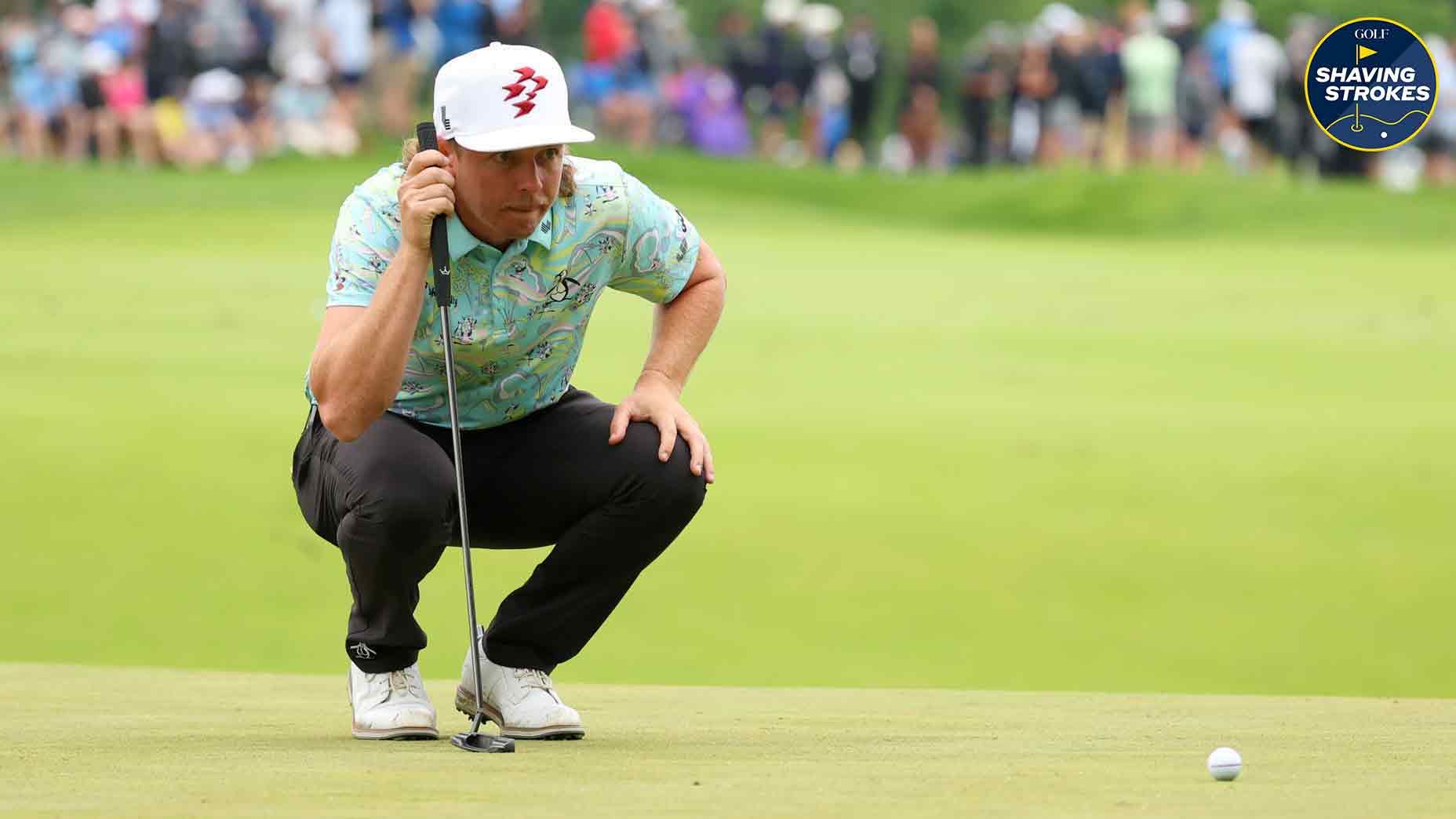Rory McIlroy and caddie Harry Diamond on Thursday on the 11th hole at Muirfield Village.
Golf Channel
Rory McIlroy’s ball? It fell left of the water and a red penalty line on Muirfield Village’s 11th hole, then rolled in.
But his penalty drop?
It came right of the water — and onto the fairway during the Memorial’s first round.
How? Thanks to an “on-this-hole-only” provision, one that previously had been in place universally.
“It’s a great break for him,” PGA Tour rules official Mark Dusbabek said on Golf Channel’s broadcast.
The sequence started on McIlroy’s tee shot, which flew left on the 589-yard par-5, hit trees and dropped to the left of a creek and the penalty red line, before trickling in. With wind off the left, the shot was difficult Thursday. In most cases now, as spelled out by Rule 17.1d (3), the drop would be found starting where the ball last crossed the edge of the red penalty area.
But McIlroy was able to drop to the right of the water — because Model Local Rule 8B-2 was in play. It’s known as opposite-side relief.
There are maybe some questions here, with one being: Why was the Model Local Rule in effect? Notably, had it not been, McIlroy would’ve had to drop onto the slope leading to the water, and Dusbabek said on Golf Channel’s broadcast that he would’ve had trouble hitting.
“Usually for the red-penalty areas, there is not opposite-side relief available,” Dusbabek said on the broadcast. “However, we instituted it this week on this hole only because the player is seriously disadvantaged by having to drop over there. You see that steep slope there. Rory would be dropping the ball and would be playing down on a steep angle there and be hard to advance the ball.
“So we introduced that. It’s a great break for him. He’s still going to take one penalty shot for going in the creek, but it’s still a better option here.”
On the USGA’s website, the Model Local Rule is explained this way:
“Rule 17.1 gives a player the option to take lateral relief or back-on-the-line relief based on where his or her ball last crossed the edge of a red penalty area. But in some cases (for example, due to the location of the red penalty area right next to a course boundary), those options may leave the player with no reasonable option other than to take stroke-and-distance relief.”
But hadn’t opposite-side relief once been in play across the board? It had. On the broadcast, analyst Frank Nobilo noted that, too.
So why the change?
On its website, the USGA explained it this way:
“Opposite side relief was a complicated option that many players were not familiar with and that was seldom used.
“The primary purpose behind this relief previously was to give an extra relief option for the unusual cases where neither back-on-the-line relief (Rule 26-1b) nor lateral relief on the side where the ball entered the water hazard (Rule 26-1c(i)) seemed viable and the player’s only realistic option was to take relief under penalty of stroke and distance (Rule 26-1a).
“In practice, opposite side relief was often taken when a player actually had adequate relief under one or both of the other relief options and thus served only to give an unnecessary extra option that at times could seem too advantageous.
“This change also helps avoid any concern that, with the expanded use of red penalty areas, a player might be able to use the opposite side option to drop on the green side of the penalty area, thereby avoiding the challenge of having to play over the penalty area.”
One more question:
Did McIlroy take advantage?
Not quite. After his drop, from about 290 yards out, he tried to hook a 3-wood toward the green, but it dropped into the trees on the right. From there, he pitched on and two-putted for a bogey, and he finished with a two-under 70, which was four back of leader Adam Hadwin.



